The Flesh and Blood community has recently taken a keen interest in topics like ‘card evaluation’ and ‘card advantage’. This makes sense, given that we are ending a competitive season, and players are researching which deck to build next in anticipation of the upcoming set release, Everfest.
Recent articles (such as Rathe Times pieces by Roger Bodee and Frank Hung) and conversations across the community have provided us with ways of translating value into numbers, so that math nerds like myself can quickly assess how certain cards might compare to each other, or measure up on a generic scale.
I’ll quickly address a couple existing methods of card evaluation provided by content creators without getting too detailed. These and other content creators have done a fabulous job explaining their methods, and I highly recommend you study them for full detail. For our purposes, I will use these as a baseline on which to expand and deepen our evaluation tactics.
Stick with me. The math gets a little deep toward the end, but hopefully my tinkering helps sharpen your deck building skills.
Two Common Methods
An article by Abbas Dedanwala discusses a method of adding up the four corners of a card to find its value on the resource curve, or whether it lies above or below it. “In a vacuum, the resource curve in Flesh and Blood operates around the number eight. This means the sum of all values on a standard card with no text should add up to eight,” explains Dedanwala.
Pitch Value + Attack Value + Defense Value – Cost to Play = 8
An article by Roger Bodee further clarifies this point system by positing that the sum of eight points applies to attacks, but non-attack actions and reactions equate to less on the curve: seven and six points, respectively.
Attacks
Pitch Value + Attack Value + Defense Value - Cost to Play = 8
Actions
Pitch Value + Attack Modifier + Defense Value - Cost to Play = 7
Reactions
Pitch Value + Attack Modifier + Defense Value - Cost to Play = 6
Something these articles fail to solidify is the value of keywords and other text found in the main body of a card. Abbas suggests that keywords should add a point, but I think we can break it down to something more specific. We’ll work on that later; let’s keep going for now.
In episode one of their new ‘FAB Foundations’ video series, Zach Bunn and Steven Wooley of Team Covenant discuss the value of a card, stating that most cards account for about 3 value points, or “damage per card” as Josh and John of Hometown TCG call it. This method considers the total damage output of an interaction and divides it by the number of cards used, to find the output per card.
Total Damage Output / Number of Cards Involved = DPC
Again, the valuation of seemingly elusive traits of a card are acknowledged but left to the realm of the subjective, which begs the question, how reliable are these methods? Is one method better than another? Can they provide complete evaluations, or are they just a starting point? If incomplete, can we account for the gaps in these methods and fill them with more math?
I don’t believe one method is better than the other. The eight-point and three-point methods are both valuable, but ultimately provide two different types of value. Framing them separately in mind will help us assign number values to certain traits later.
Framing
Potential Value
I frame the eight-point method as ‘potential’ value, or the total value a card would have if you were able to do everything you could with it – benefit from attacking, blocking, pitching, and whatever additional text value it might have.
Of course, the most we can hope to gain is three of these things, since cards can’t be used to attack and block at the same time.
Since this calculation happens in a vacuum, you’re likely using this method on cards you haven’t seen before: in a draft maybe, or when you’re skimming a netdeck for the first time and comparing all the cards to each other.
Actualized/Realized/Spent Value
I frame the three-point method as the ‘actualized’ value a card provides as part of a card transaction. If you’re calculating this, then the card will have been played, or pitched for more value later. However, this doesn’t mean you can’t use the AV method before you sit down to play – you definitely should. You can use it to think through lines of play when you’re considering playing cards that scored well when you did the PV method.
You can think of it as: ‘potential’ value happens pre-play, ‘actualized’ value after. For ease of reference, in this article I will refer to these as PV and AV respectively.
‘Potential’ value (PV) happens pre-play, ‘actualized’ value (AV) after.
A Few Notes:
- I disagree that damage is the only thing we should calculate into AV. There is more value to calculate as part of card transactions, and this piece is critical to evaluating Boltyn fairly. Lots more on this later.
- A quick rule of thumb for counting the number of cards used in a transaction is by asking “how many cards moved to a different zone?” The sum total of cards going to your soul, graveyard, pitch, deck, and banished zones provide this denominator.
- AV is also why pitching is not a bad thing, by the way. Not every deck needs to redline, nor should they.
You might ask, “wouldn’t I just want to use the AV method all the time?” Well sure, but as much as any of us would like to be a supercomputer, you can’t easily know every line of play and decision you’ll be facing down with every card. More importantly, the PV is quick to calculate, and can weed out bad cards that seem good from your decision to include them in your deck, or not.
How can I be sure what a card is worth without having tangibles for keywords or traits related to classes or talents?
Will, I'm Here for Boltyn Content...
Yes, yes. Let’s look at what Boltyn wants to do.
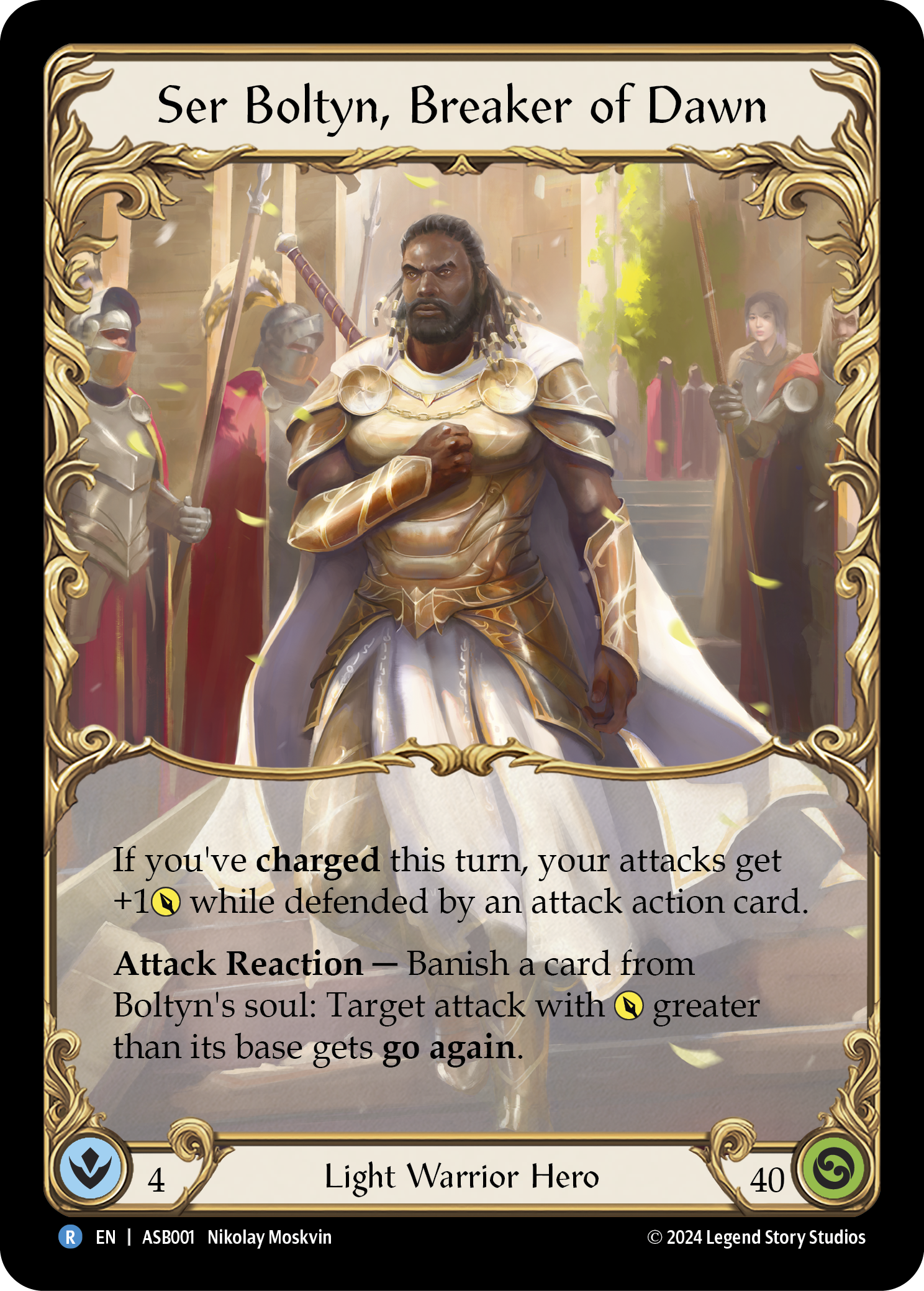
Boltyn's first ability says that, when your opponent blocks with their own Attack Action cards, your attack gains +1 physical damage, if you have charged for the turn. Boltyn’s second ability lets any of your attacks gain go again, if the attack’s damage is greater than its base value.
Does that mean cards that include the Charge keyword get an additional 1 point of potential value (PV)? And how does the math work for adding the go again PV?
It's time to discuss conditional value.
How Much is Go Again Worth?
2 points.
Furthermore, it's worth two points unless it's conditional go again, in which case it's only one point. My answer to valuing conditional costs is to cut the value in half. Since this differs from what’s been discussed in the articles I mentioned above, let’s back up my position.
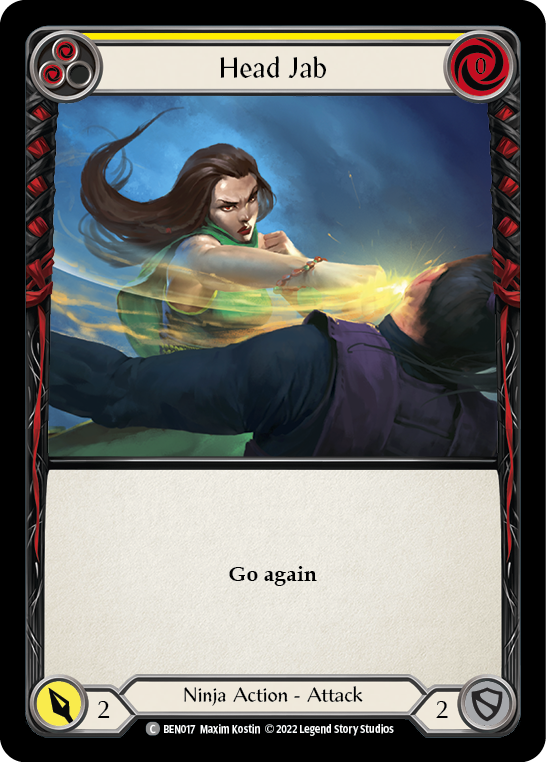
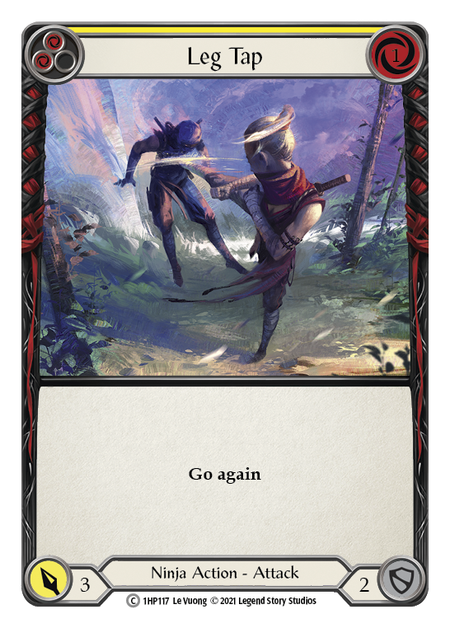
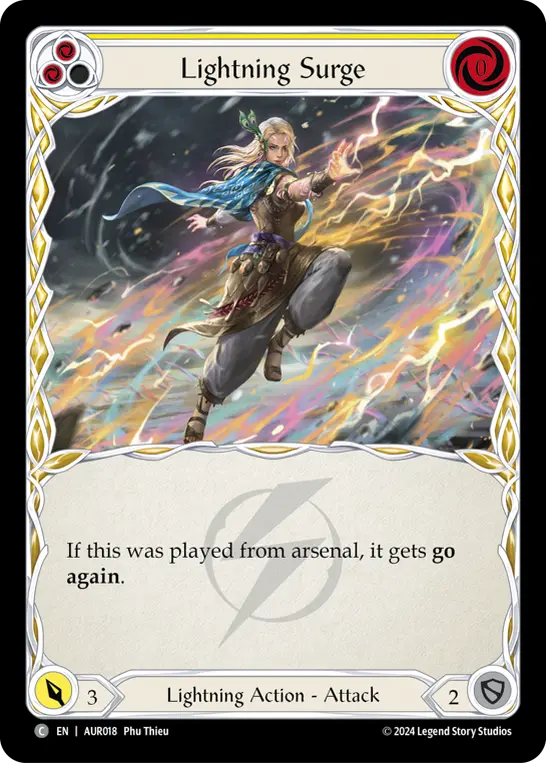
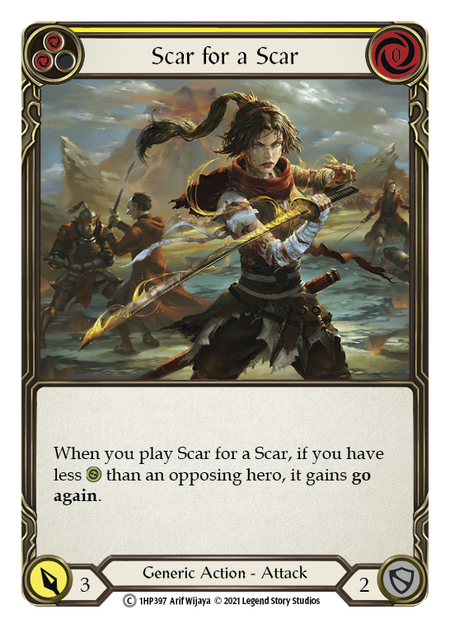
All of these cards equal 8 PV when go again is valued at two points, or one if conditional.
(The same is true for other keywords or things like card draw, as you can see below.)
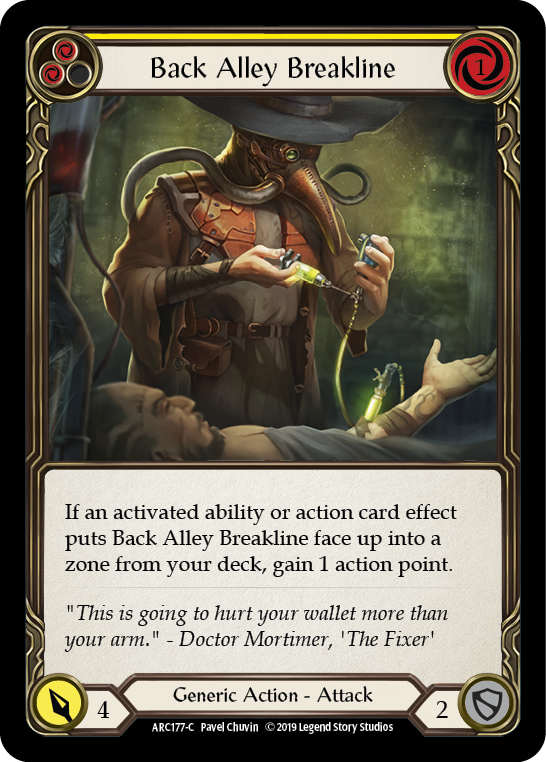
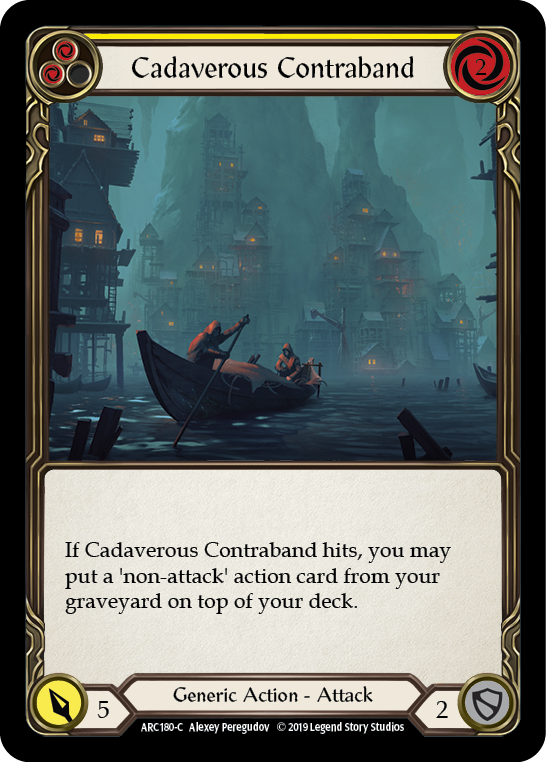

You can consider any keywords and card transactions like draw or discard as being equal to two points, or conditionally one point. A generic card is worth 2, because an average card (yellow) pitches for two (like Cracked Bauble), and you can apply this value of 2 in scenarios where cards are moved into different zones.

Example:
Enlightened Strike is a zero-cost card with an additional cost of putting a card from hand back into the deck - which you can equate to pitching a yellow.
Damage (5) + Block (3) + Pitch (1) - Cost (2) + Any option in the text box (2) = 9 PV
At 9 PV, E Strike beats the 8 PV average. Spoiler: It also performs well in AV transactions, which is why you see it in so many decks.
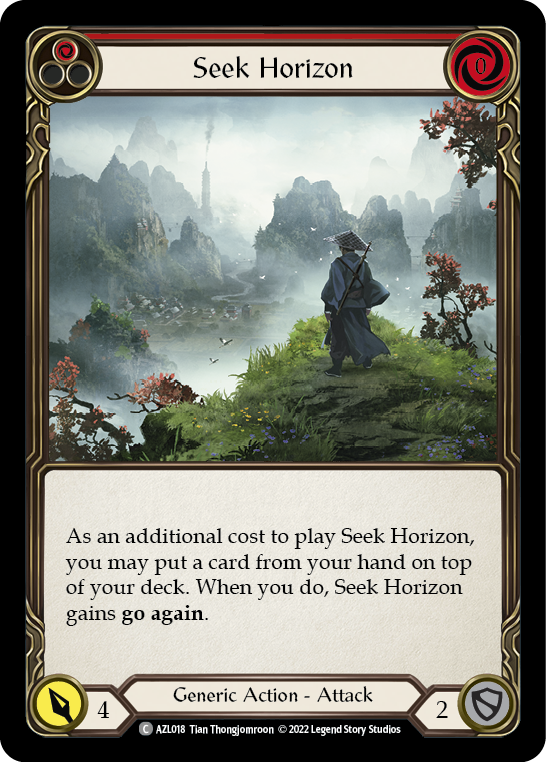
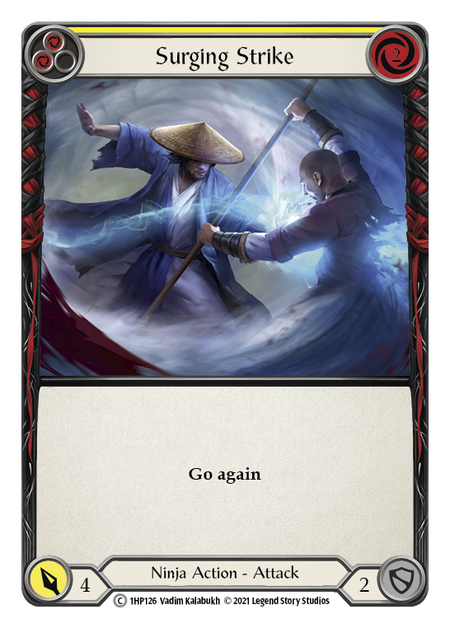
This 2 point value for Go Again applies when calculating AV, too. Consider Surging Strike, which has Go Again but requires you to pitch a card to play. Or Seek Horizon, which costs zero but gains go again if you “pitch” a card to the top of your deck. Surging has better PV than Seek, but the AV transaction is the same in either case:
Damage (+4) + Go Again (+2) = 6 / 2 cards in the transaction = 3 points of AV per card
With this knowledge, we have expanded our toolbox for including keywords and conditions in our PV and AV calculations. Let’s use this to deepen our understanding of Boltyn.
A card sitting in soul represents go again, but it is conditional according to Boltyn’s second ability: your attack can gain go again if the attack’s damage is greater than its base value.
Remember: Go again is worth two points, and you’re able to use a card from soul for go again based on the condition of an attack having damage greater than its base. Therefore, each card in soul represents 1 PV.
Go Again (2) * Condition (0.5) = 1 PV
1 PV for a card sitting in soul seems pretty measly, I know. Cards in soul become significantly more valuable later, when you use them as part of a larger string of card transactions and calculate AV. (We’ll do this shortly.)
Conditions also come into play when glancing back at Boltyn’s first ability. An attack gains +1 damage if the opponent blocks with an attack action if you’ve charged - that's a conditional ability.
Damage (1) * Condition (0.5) = 0.5
Cards that Charge get +0.5 of PV? Meh. Ok, anything else?
Oh yes. The Holy Blade.
Raydn
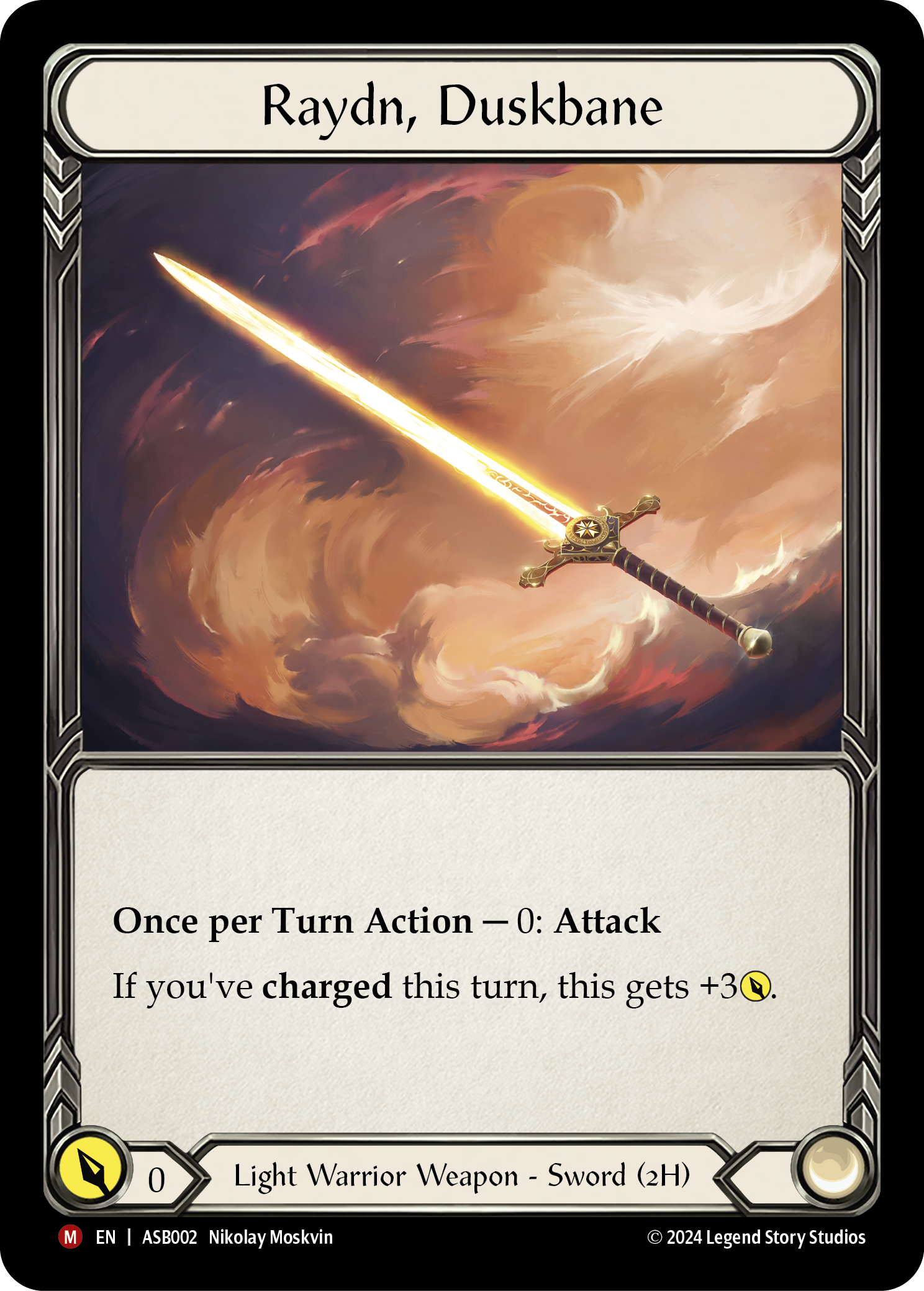
You may have noticed Boltyn’s first ability actually consists of two conditions: if you’ve charged, and if the opponent blocks with an attack action. For now, we’ll consider the condition of the enemy blocking to be the 0.5 value we just calculated. Having a card to charge with is definitely a condition we need to consider, but let’s cover Raydn first.
Boltyn’s weapon gains +3 physical damage when you charge for the turn. In this case we’d add 1.5 points of PV to cards that charge.
Charge (3 damage) * 0.5 (condition on you having go again to be able to swing Raydn) = 1.5 PV
We then add the 0.5 from Boltyn’s ability and cut the total in half again, since charging is conditional on you having a card in hand to put in soul.
2 * 0.5 = 1 PV
But wait... if I’m losing a card from hand, then that must be -2 somewhere, right?
Yes; just like pitching a generic card (think Cracked Bauble), putting a card in soul acts like a cost of 2 PV, which you subtract from the charge card’s total PV. You can still get value from these cards later when you use them to go again, at which time you would calculate them into an AV transaction.
First, let’s work out the PV on some charge cards:
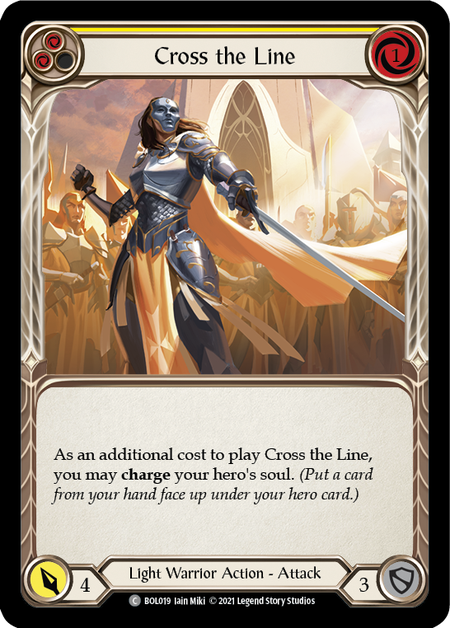
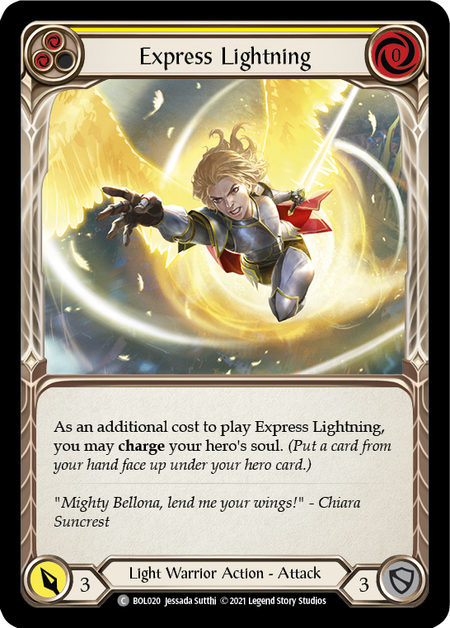
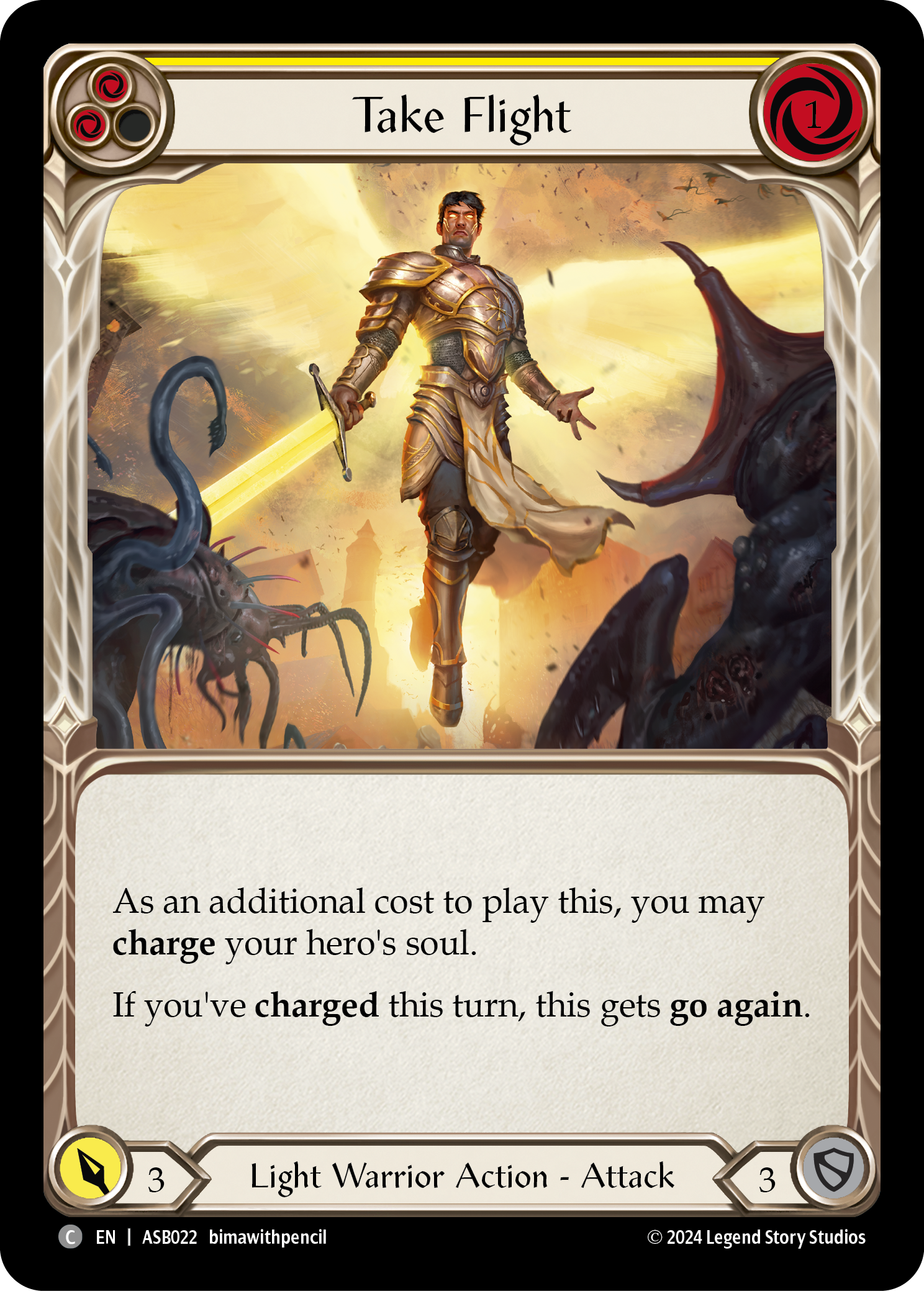
Take Flight:
Damage (3) + Block (3) + Pitch (2) - Cost (1) + Charge keyword (1) - Charge cost (2) + Conditional GA (1) = 7 PV
Cross the Line:
Damage (4) + Block (3) + Pitch (2) - Cost (1) + Charge keyword (1) - Charge cost (2) = 7 PV
Express Lightning:
Damage (3) + Block (3) + Pitch (2) - Cost (0) + Charge keyword (1) - Charge cost (2) = 7 PV
"Wait – so if I charge a card, I’m actually getting less PV from these charge cards than if I didn’t charge?"
Yes - but remember, you’re also getting 1 point of PV that sits on the board for you to use later, in the form of conditional go again in your soul.
Let’s use this 1 PV to calculate the PV on Engulfing Light, since it has an on-hit condition of becoming a 1 PV card in soul.
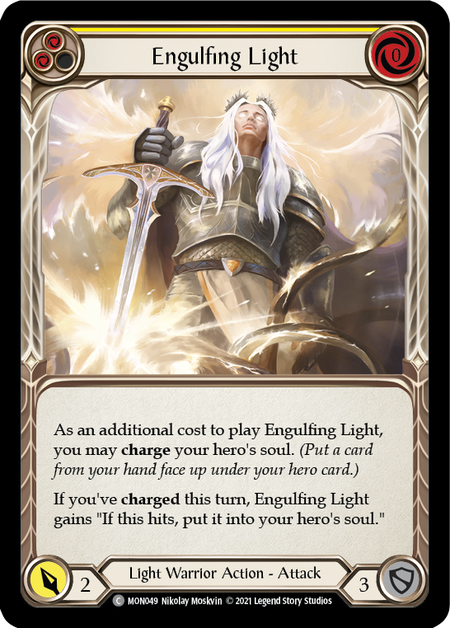
2 damage + 3 block + 2 pitch - 2 charge (cost) + 1 charge (ability) + .25 (value of a card in soul [1] * on-hit condition [.5] * charge condition [.5]) = 6.25 PV
If you’ve ever wondered why people say Engulfing Light is just okay, this might be your answer.
Bolt of Courage is another card with a charge and on-hit double condition.
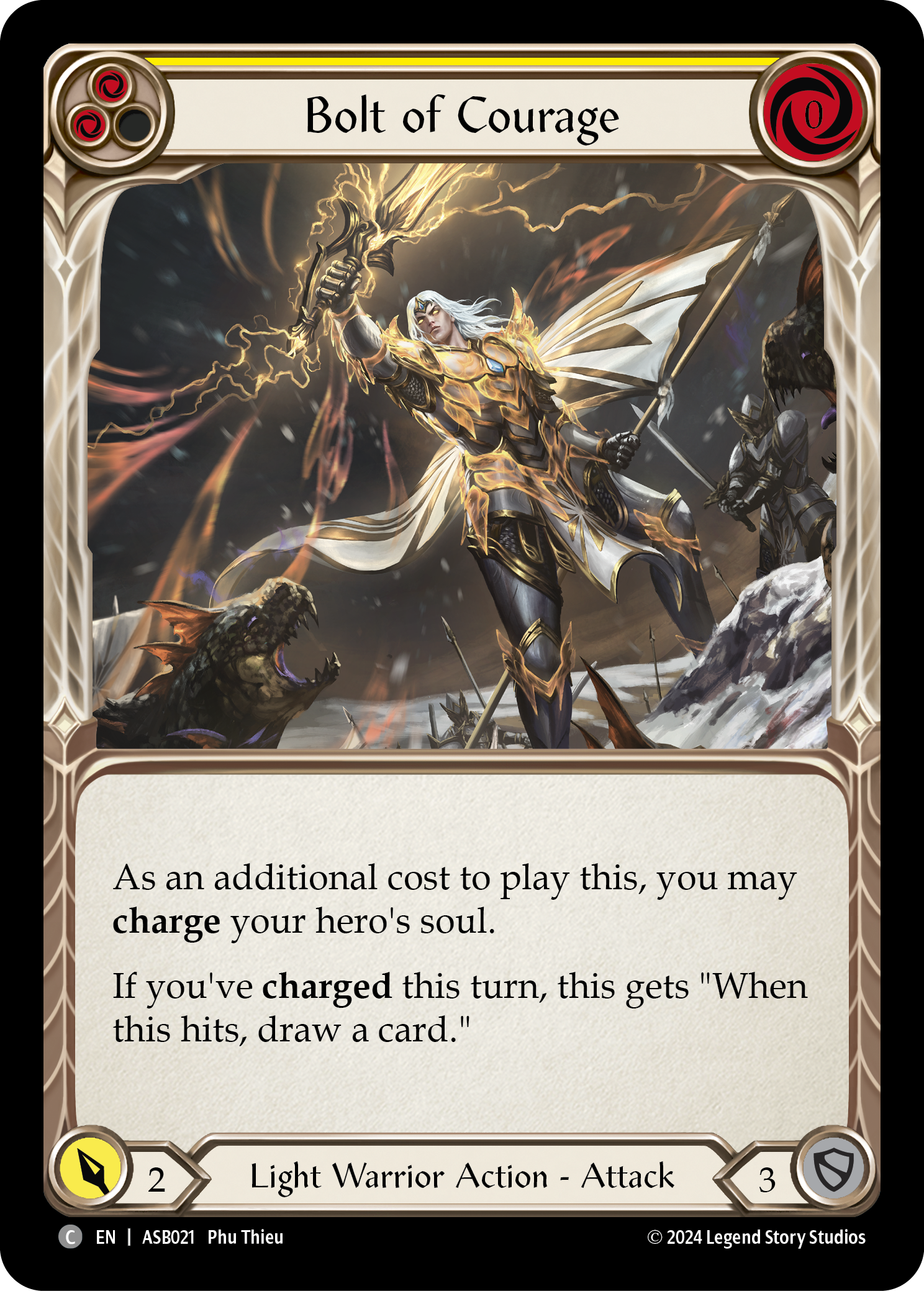
2 damage + 3 block + 2 pitch - 2 charge (cost) + 1 charge (ability) + .5 (card draw [2] * on-hit condition [.5] * charge condition [.5]) = 6.5 PV
It is important to keep in mind that PV is calculated within a vacuum, and is not a complete representation of the value a card holds in a game. I think Engulfing and Bolt are both key cards in Boltyn’s current card pool (especially Bolt), since Boltyn’s strategy is to capitalize on going wide by chaining together multiple attacks. These cards enable that strategy.
Actualized Value (AV)
Now that we know how to calculate PV on charge cards, let's calculate AV for some lines of play. We’ll use the following hand:
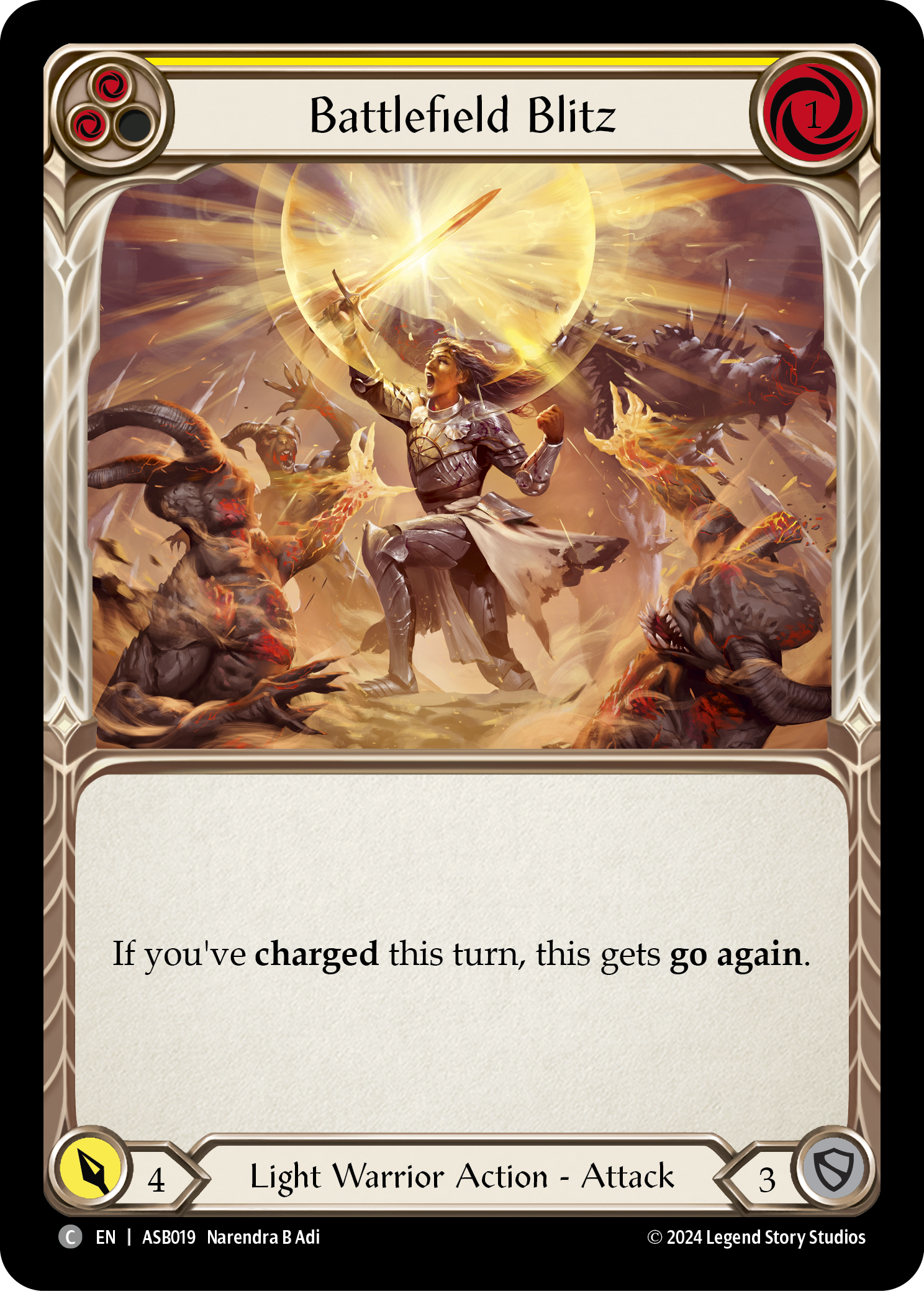
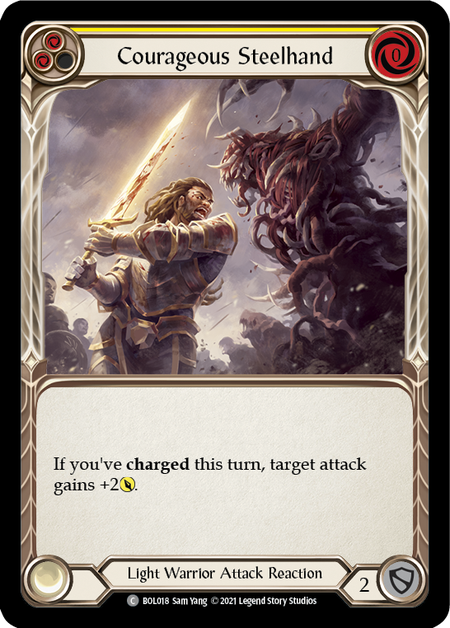


Before we continue, take a minute to work out a couple lines of play and choose one you’d execute.
Things to Consider:
- Raydn should not be considered as its own card when calculating PV or AV. It does not hold any inherent value; its value is derived and paid for from the charge card and card going to soul.
- Remember, we said go again is worth two points in AV, just like PV, so we need to +2 as it occurs in each line.
Ready?
Line one:
Cross the Line (+5) > pitch Take Flight > charge Battlefield Blitz > Courageous Steelhand (+2) > GA from soul (+2) > Raydn (+3) = 12 / 5 (cards that moved zones) = 2.4 AV
Line two:
Take Flight w/ GA (+5) > pitch Courageous > charge Battlefield > Raydn (+3) > GA from soul (+2) > Cross the Line (+5) = 15 / 5 (cards that moved) = 3 AV
Line three:
Take Flight w/ GA (+5) > pitch Courageous > charge Cross > Battlefield w/ GA (+6) > Raydn (+3) = 14 / 4 (cards that moved) = 3.5 AV
Do you still like your choice?
If you chose line two or three, you’re probably familiar with maximizing Boltyn - but note the differences.
In line two, Boltyn’s go again ability is used for maximum damage. AV for that line equals 3 per card, which is average, so we don’t appear to be missing any value.
However, when we look at line three we can see that we are outputting slightly less damage, but our card efficiency is much higher. We also saved a card in soul by using the go again printed on Battlefield Blitz.
One of these lines being strictly better than another is probably less relevant than asking the question, “which line of play should I take based on my current game state?” Sometimes it might be more important to pressure your opponent with that extra point of damage than to maximize card advantage.
Again, it is very hard to know this answer ahead of time, since examples like this exist within a vacuum. Practicing these calculations will help you develop the skill to do it quickly during the game.
V of the Value Train
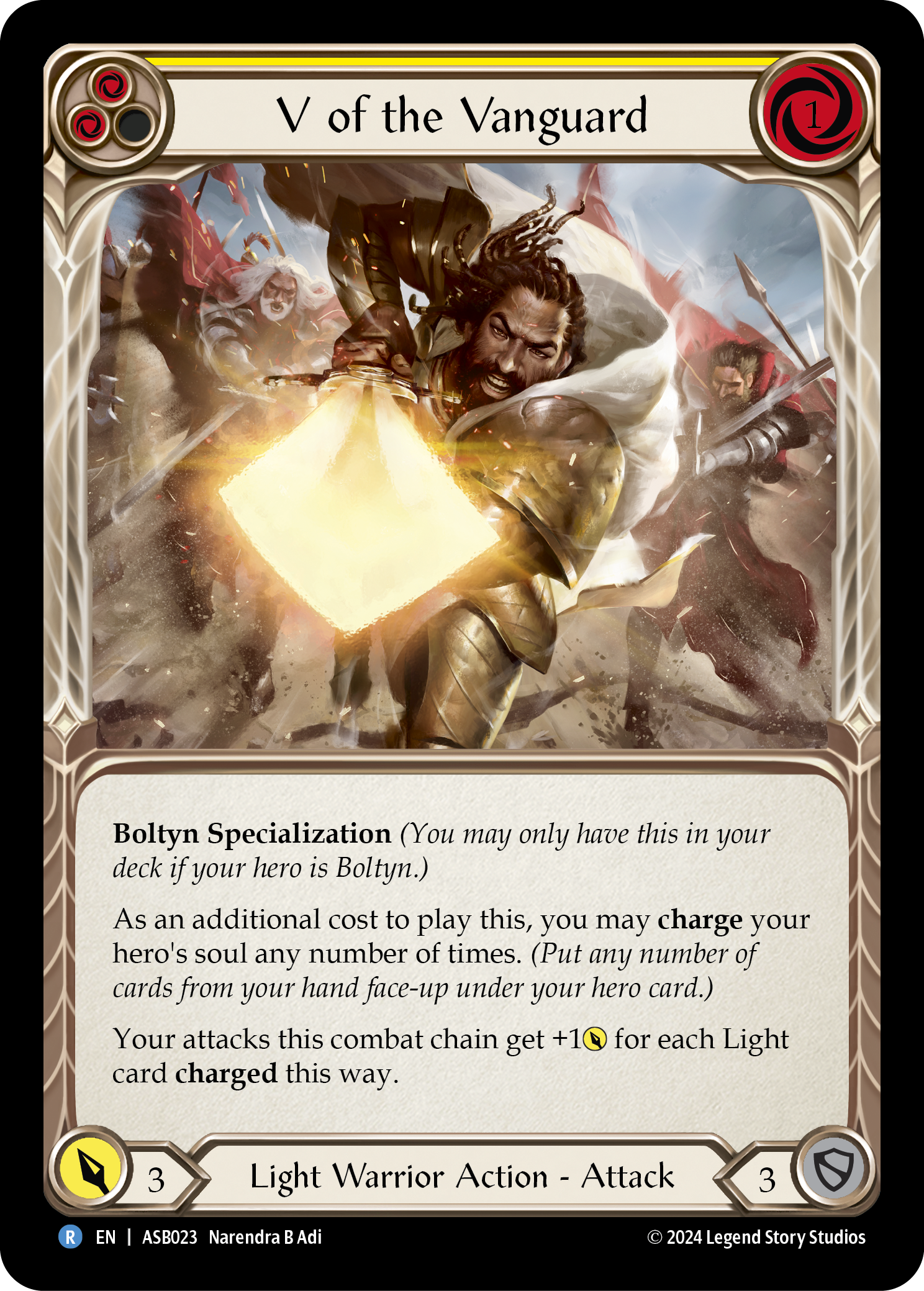
It took me longer than I’d like to admit to fully appreciate how powerful this card is. V of the Vanguard might be my favorite card in Boltyn, and it is certainly a cornerstone in any Raydn deck. Let’s do another AV exercise.
- V is in your arsenal.
- Tunic counter is on 3.
- One card is in soul.
- Snapdragon Scalers are ready.
Consider this hand:
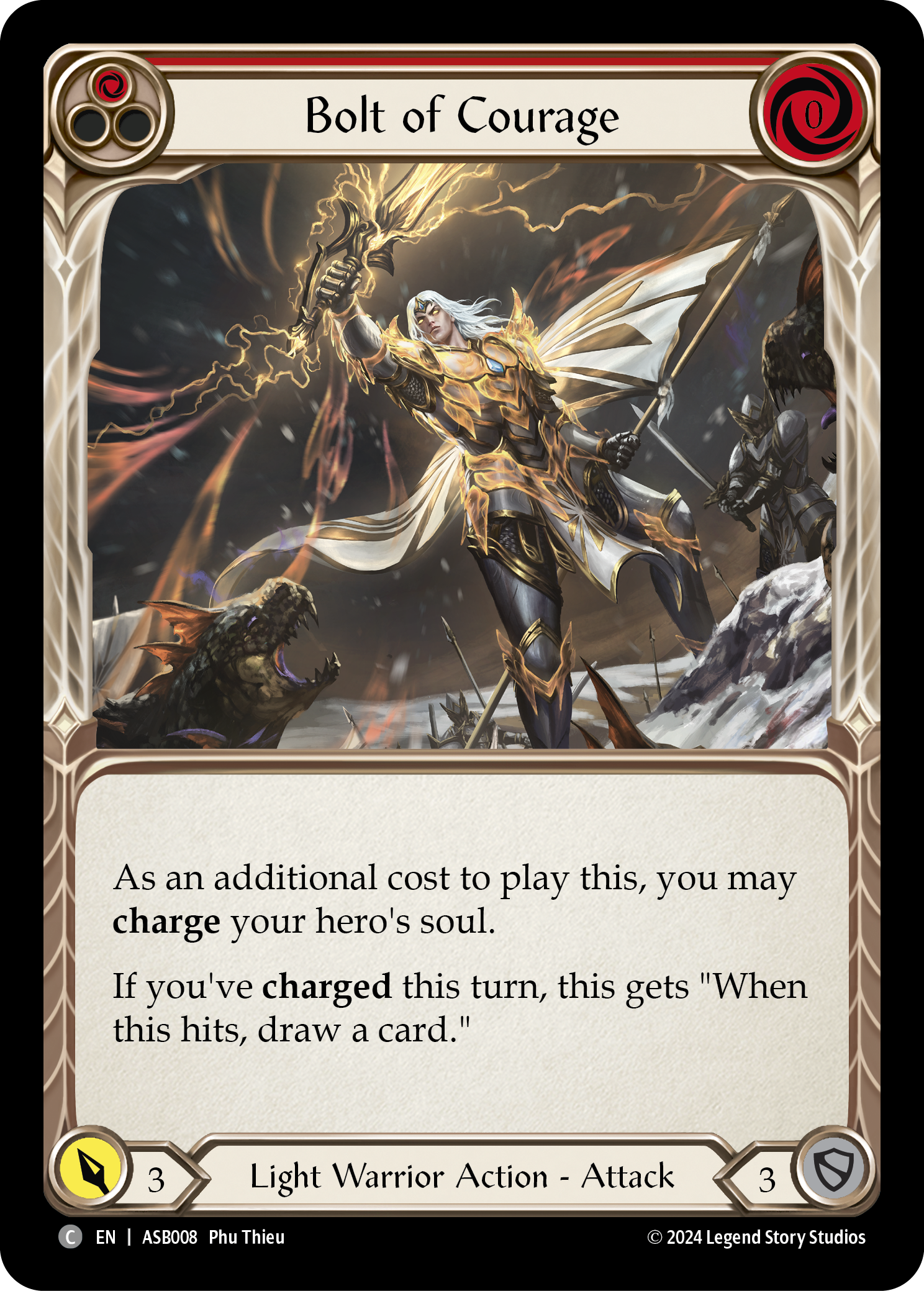
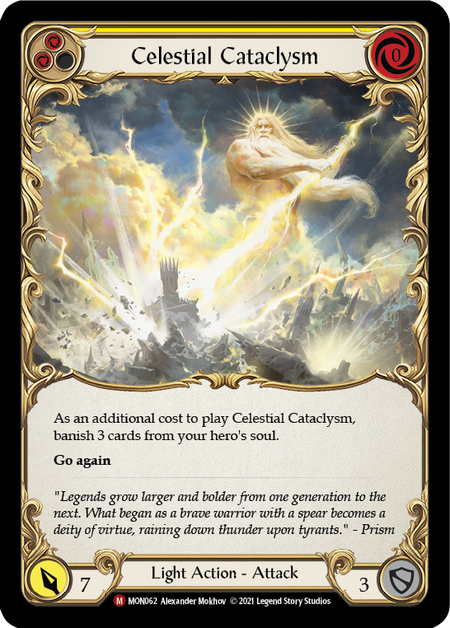

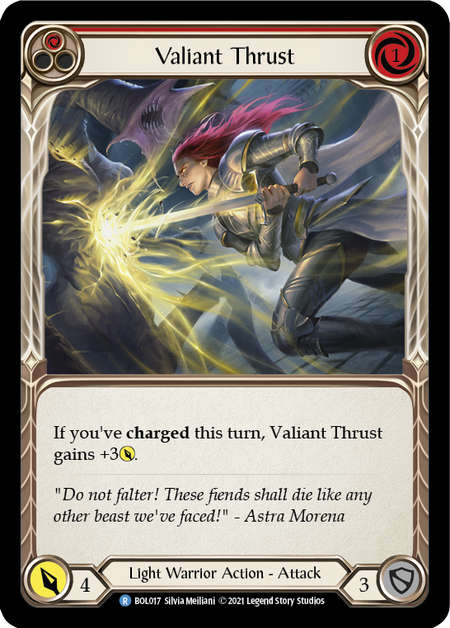
Line one:
V off Tunic charging 3 (+6) > Snapdragon Scalers for GA (+2) > Celestial Cataclysm w/ GA (+12) > Raydn (+6) = 26 / 9 = 2.89 AV per card.
Line two:
V off Tunic charging 2 (+5) > Snaps for GA (+2) > Celestial w/ GA (+11) > Raydn (+5) = 23 / 8 = 2.88 AV and arsenal something for your next turn.
Line three:
V off Tunic charging 2 (+5) > Snaps for GA (+2) > Bolt of Courage (+5) > GA from soul (+2) > Raydn (+5) > GA from soul (+2) > Engulfing Light (+4) = 25 / 8 = 3.13 AV with potential card draw or a card in soul if Bolt or Engulfing hit.
Line four:
V charging 2 (+5) > pitch Celestial > GA from soul (+2) > Raydn (+5) > GA from soul (+2) > Valiant Thrust (+9) = 23 / 7 = 3.29 AV and saves your Tunic resource.
Line five:
V charging 1 (+4) > pitch Celestial > Snaps for GA (+2) > Bolt of Courage (+4) > GA from soul (+2) > Raydn (+4) > GA from soul (+2) > Valiant Thrust (+8) = 26 / 7 = 3.71 AV with potential card draw if Bolt hits, and saves your Tunic resource.
A V in arsenal and a Tunic resource are a match made in heaven, but don’t be afraid to pitch. Practice your timing. Playing V at the right opportunity could win you the match. Have patience, and try not to charge more cards than necessary.
To Charge, or Not to Charge?
While the PV on some cards paints charging in a less-than-valuable light, the AV lines we calculated show the benefits you can gain by paying close attention to how you move cards through Boltyn’s soul. The efficiency of high damage output lines involving V of the Vanguard and Celestial Cataclysm would not be possible without soul cards. Just as you should not worry about pitching good cards, you can rest assured that your future use of soul cards will add value to your gameplan.
Thanks for reading, and stay tuned for Part II of this series, where we will take a close look at light cards we haven’t discussed yet, the value of non-light cards, new Everfest cards, and what to include in place of Plunder Run. Look for that to drop after the Everfest release!
Audio narration by the author, Will Reinhardt | Background music by Alexander Nakarada | Music promoted by Chosic.com | Attribution 4.0 International (CC BY 4.0)







